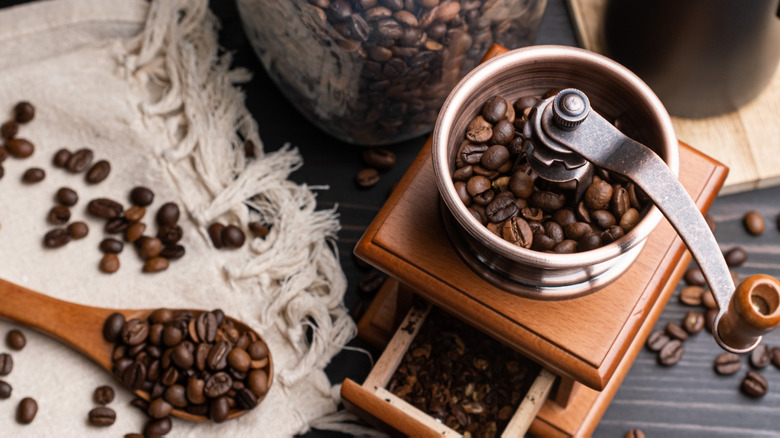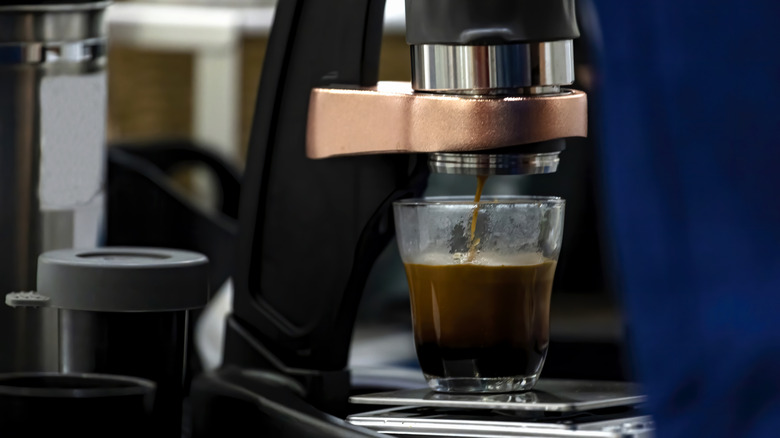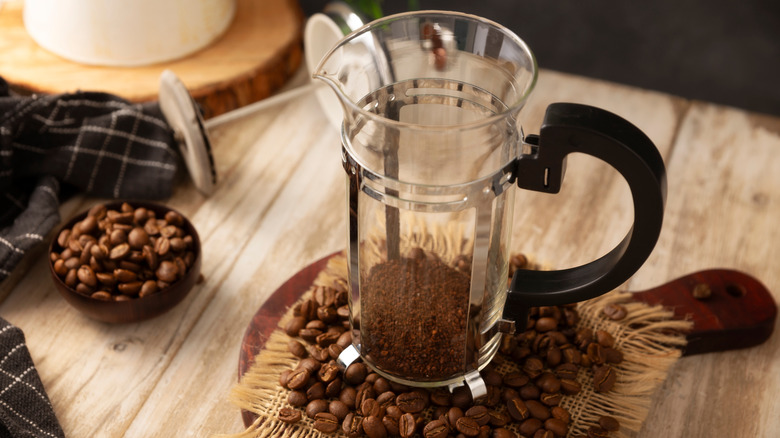Are You Grinding Your Coffee Beans Correctly? Here's The Right Way To Get The Best Brew
If you're enough of a coffee connoisseur that you want to spend the time making your home-brewed coffee better in any way you can, you're probably grinding your own beans for the freshest taste. But how do you know you're doing it the right way?
By following the time-honored tradition of seeking expert advice — in this case, from former barista Matt Woodburn-Simmonds, who blogs at Home Coffee Expert. For starters, he says you shouldn't save time by prepping in advance. "Grind your beans fresh every single time you want to brew coffee to ensure the maximum flavor quality in your cup," he explains.
Yes, it matters how soon you brew the coffee beans you've ground. "As soon as you grind the coffee beans, you are exposing the oils inside them to the air, and they slowly evaporate. Since a lot of the deliciousness is in these oils, you want to brew as soon as possible after grinding. Ideally, no more than 15 to 20 minutes," advises Woodburn-Simmonds.
Choose the right grind for the brew
Depending on the kind of coffee you're making, you may need to alter your grind to fit. The finest grind is reserved for espresso since, as Woodburn-Simmonds explains, "Extraction only takes around 30 seconds. Even under pressure, with this little time for the water to be in contact with the coffee, you need very fine grounds to allow all the flavor to extract."
With a French press, the coffee steeps for several minutes. "This longer brew time makes it very easy to over-extract, so a very coarse grind is required," he reasons. The same is true for pour-over coffee — one of the mistakes you must avoid if you want a perfect pour-over is using too fine a grind. According to Woodburn-Simmonds, "Pour-over requires a coarser ground as the water spends longer in contact with the coffee grounds as it works its way through the grounds bed."
The type of roast you use will also affect the grind. "The darker the roast, the faster the flavors will extract, so if you keep all other variables the same, then a light roast coffee needs to be ground finer than a dark roast coffee. Lighter roasts are denser and less porous than darker roasts, meaning flavor extraction is slower," Woodburn-Simmonds informs us.
What to do with mis-ground beans
So what can you do if you've ground the beans wrong? Woodburn-Simmonds has some suggestions. "Alter the brewing time, especially if you are using a steeping method," he says. "If you grind too fine, then steep for less time, and steep longer if too coarse. This isn't an exact science, but you can mitigate it a little." You can also brew at a hotter temperature, but you run the risk of burning the coffee.
However, the longer or shorter steeping time won't really work when you're making espresso. The reason is that the grind size here is helping to create the necessary pressure that allows for extraction. Woodburn-Simmonds cautions against using an improper grind for espresso. "You're most like[ly] to either get thin watery coffee if it's too coarse or possibly no coffee at all if it's too fine and your machine can't generate enough pressure to get the water through the grounds," he states. In such a case, it's best to alter your plans on the fly and use those freshly-ground beans to make a standard cup of coffee rather than wasting them in your espresso machine.


